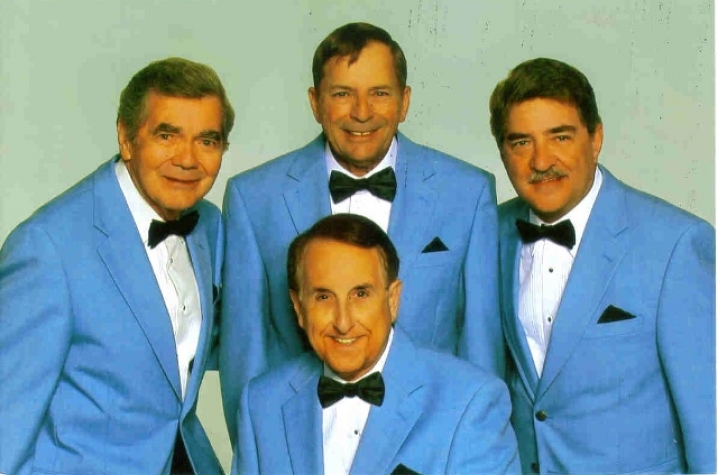UK Researchers Leading the Way in Understanding Age-Related Voice and Swallowing Disorders
LEXINGTON, Ky. (Nov. 21, 2013) − John Barker, is one of 29 percent of the population over the age of 65 who complain of a voice problem. Barker, 83 from Ashland, Ky., was referred to the University of Kentucky's Clinical Voice Center after he noticed his voice was getting weaker and he could no longer hit the high notes when he sang.
Music has been a big part of Barker's life since he first sang publicly in the first grade. He went on to sing with a trio in college, with a German dance band while in the military, and currently sings with his church choir and a group in Ashland called 'Old Friends,' featuring music from the Big Band Era.
As people age, it is inevitable that bodily changes take place. Some of the most obvious tell-tale signs are graying hair, extra lines and wrinkles, loss of muscle mass, decline in vision and hearing but the voice ages as well.
An interdisciplinary team of researchers from the UK College of Health Sciences and the College of Medicine, have been awarded several National Institutes of Health (NIH) grants, including a $1.5 million grant, to advance a new line of translational research that only a handful of researchers in the country are doing: uncovering the biology of the aging voice.
The translational research of this interdisciplinary team is leading the way in the understanding and care of age-related voice and swallowing disorders and may someday help predict who will develop voice and swallowing problems.
Within the next 15 years, one-fifth of the U.S. population will be over the age of 65. Joseph Stemple, professor in the Division of Communication Sciences and Disorders in the College of Health Sciences and co-investigator on the study, says that people are living longer, working longer, and because of that, want to maintain their youthful voice.
"The deterioration of voice quality has a negative impact on health and especially so if there is also trouble swallowing. The goal of our research is to determine if we can do something with the laryngeal muscles to diminish their response to aging," said Stemple. "Voice and swallowing therapy conducted by a speech-language pathologist currently helps individuals with these disorders, but the underlying biology is still not well understood. Unlike arm and leg muscles which can be strengthened with exercise, it is not known if or how laryngeal muscles can be best adjusted due to its unique biology. Discovering this knowledge is the goal of our research."
The aging voice, medically known as presbyphonia, is a bowing of the vocal folds that leads to symptoms that make a person 'sound old.' The primary symptoms of presbyphonia may include a breathy and soft voice, and a general difficultly in raising the loudness of the voice. Hoarseness may also occur so that the voice is no longer clear, and the ability to vary vocal pitch may also be reduced. These changes work together to make speech, voice and singing much more effortful to produce.
The larynx, a structure that forms the valve-like entryway into the lungs, is one small part of a larger system that allows humans to produce speech and song; a system that includes the entire area from the abdomen to the skull. "More than 50 muscles are involved across this entire region to produce speech, including the six muscle groups and nine cartilages in the larynx," said Richard Andreatta, associate professor in the Division of Communication Sciences and Disorders. "Voice production involves dynamic control of the throat, lungs, and abdomen which are all centrally regulated by the brain. All the parts must interact just to produce a simple sound.”
Colleen McMullen, adjunct faculty in the Department of Physiology in the College of Medicine and principal investigator on the study, said that it may be possible in the future to enhance voice quality and swallowing in humans with injectable growth factors that promote healing and restoration of the laryngeal muscles.
Currently, the team is testing the effects of injection of growth factors, and exercise of the laryngeal muscles on animal models that possess similarities to the laryngeal anatomy of humans. "We are building towards something that can help humans," Stemple said. "We are also looking at biomarkers in humans so that we can predict who will develop voice and swallowing problems and who will benefit from these treatments."
Barker worked with JoAnna Sloggy, a Speech-Language Pathologist and Singing Voice Specialist at the UK Clinical Voice Center. Once videos and photos of his larynx were taken and a diagnosis of presbyphonia was determined, a rigorous course of vocal exercises was prescribed. Today, Barker's voice is strong and clear.
"If I couldn't sing, life would be," he said and pauses, "….bad."
"I am very pleased with UK's program and the great group of people there," he said.
Media Contact: Ann Blackford at 859-323-6442 or ann.blackford@uky.edu







